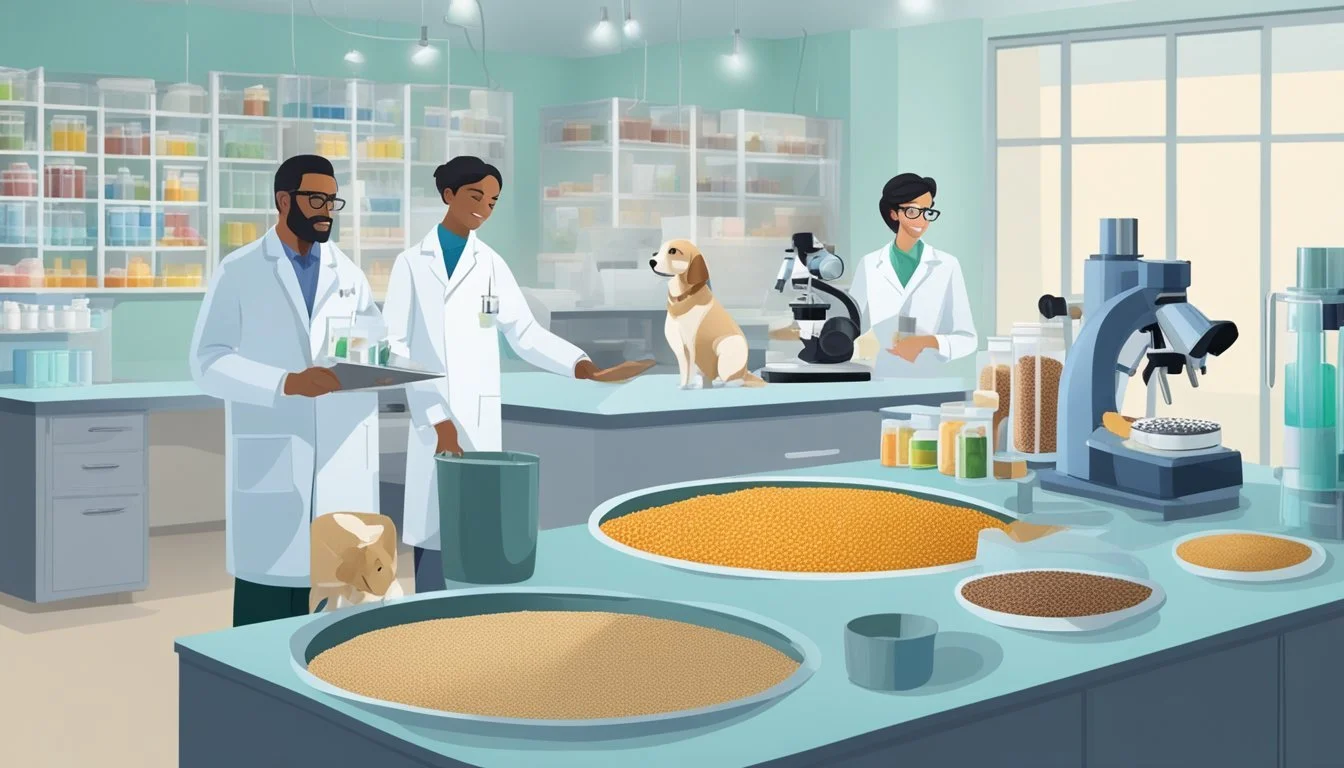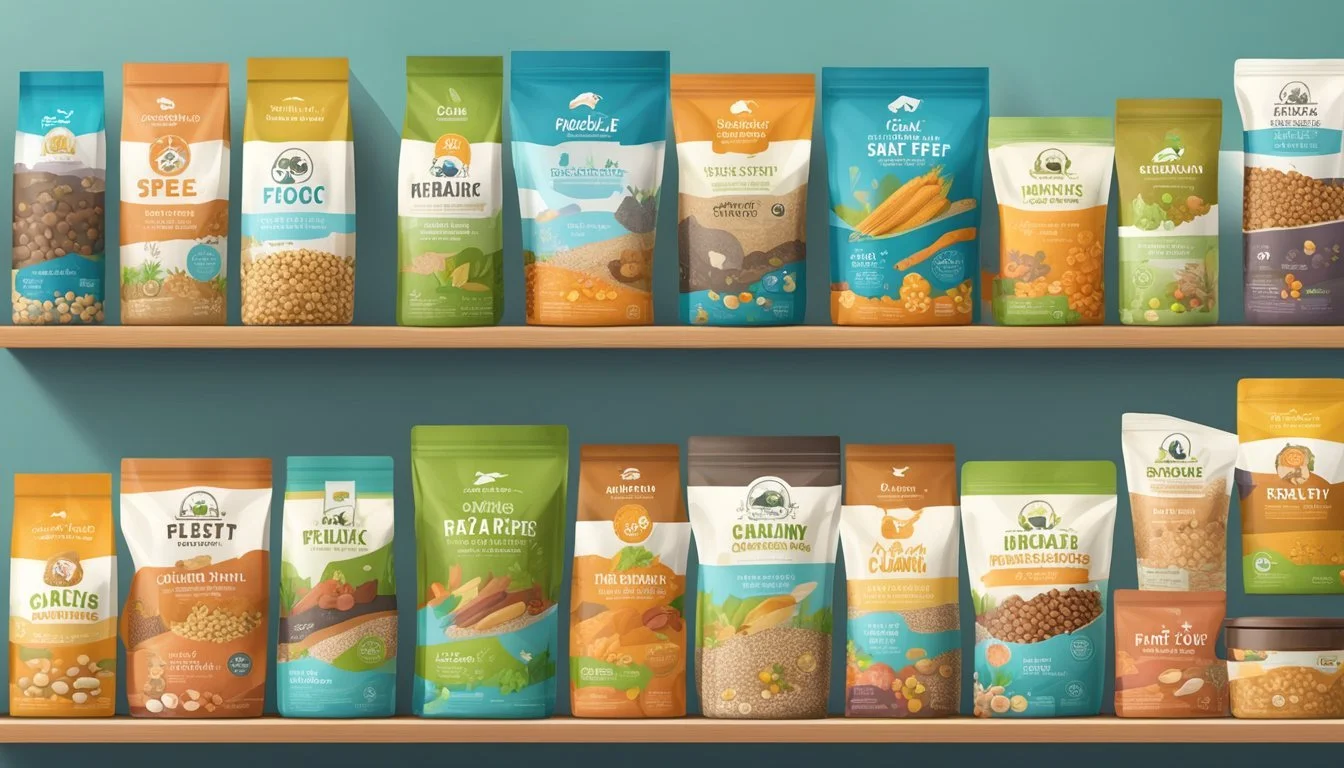Exploring Grain-Free Diets for Pets
Uncovering the Pros and Cons
In recent years, grain-free diets for pets have gained popularity among pet owners. This trend is partly driven by the belief that these diets offer health benefits similar to a more 'natural' diet that their carnivorous ancestors might have eaten. Nonetheless, grain-free pet food often replaces grains with other sources of carbohydrates like peas and lentils, which have come under scrutiny by researchers and veterinary professionals.
There is no definitive medical evidence indicating that grain-free diets are inherently better for pets than their grain-inclusive counterparts. In fact, certain studies have suggested potential health concerns associated with grain-free diets, such as a possible link to canine dilated cardiomyopathy (DCM), particularly in breeds not genetically prone to the disease. The FDA has been investigating this potential correlation since a noticeable number of DCM cases reported were in dogs consuming grain-free food.
Exploring grain-free diets for pets opens up a world of health and wellness possibilities for our beloved companions. Just as humans can benefit from a grain-free lifestyle, our pets can also thrive on diets that prioritize high-quality, grain-free nutrition.
When considering grain-free pets diets, it's essential to understand the significance of grains in both human health history and pet nutrition. By delving into the research and insights surrounding grain-free living, pet owners can make informed decisions that support their furry friends' well-being.
Introducing grain-free international cuisine to your pet's diet can be an exciting way to provide diverse and flavorful meals. From savory protein-rich recipes to wholesome vegetable-based options, there are abundant grain-free choices to satisfy your pet's palate and nutritional needs.
By being mindful of grain-free hidden grains labels and incorporating grain-free flour alternatives into homemade pet treats, pet owners can ensure that their furry companions receive nourishing and wholesome meals that align with their grain-free dietary goals.
Furthermore, offering grain-free dog treats can be a rewarding way to address grain-free carb cravings in pets while providing them with delicious and healthful snacks that promote overall well-being.
By embracing the benefits of grain-free diets for pets, pet owners can support their furry friends' health, vitality, and happiness, creating a nurturing and enriching environment that celebrates the joys of grain-free living for all members of the family.
Understanding Grain-Free Diets
Grain-Free Diets for pets have become a considerable talking point among pet owners and veterinarians. This section delves into the structure of these diets, how they differ from other dietary options, and the common beliefs surrounding their benefits and effectiveness.
Defining Grain-Free
Grain-free pet foods are formulated without the inclusion of grains such as wheat, corn, rice, barley, oats, and rye. Instead, they often contain alternative sources of carbohydrates such as potatoes, sweet potatoes, peas, and lentils. The primary aim of a grain-free diet is to offer pets, particularly those with food sensitivities, a diet that is closer to what their wild ancestors might have consumed.
Grain-Free Versus Gluten-Free
While both grain-free and gluten-free diets exclude grains that contain gluten, such as wheat, barley, and rye, there is a distinction. A gluten-free diet specifically eliminates gluten, a protein composite found in these specific grains. Gluten-free pet foods may still contain grains that do not have gluten, such as rice or corn. Conversely, grain-free foods remove all grains and are inadvertently gluten-free, but the primary focus is on excluding all grain types.
Popularity and Perceptions
Grain-free diets have gained popularity based on the belief that these foods are more natural for pets and can help with certain health issues. Some pet owners perceive grain-free food as a way to alleviate food allergies and sensitivities in pets. However, it is essential to note that food allergies in pets are more commonly caused by proteins rather than grains. Despite their popularity, pet owners should approach grain-free diets with a clear understanding of their pets' nutritional needs and consider professional veterinary advice before making diet changes.
The Nutritional Debate of Grain-Free Diets
Grain-free diets for pets have become increasingly popular, sparking debates among pet owners and veterinarians over their nutritional adequacy. The crux of the debate focuses on the balance and source of carbohydrates, the quality of protein, and the inclusion of essential vitamins and minerals.
Carbohydrates in Pet Food
Pets require carbohydrates for energy, with grains traditionally serving as a common source. However, grain-free diets substitute grains with other carbohydrate sources like potatoes, peas, and lentils. Proponents argue that these are more natural for pets, while opponents cite the lack of grains can potentially lead to an imbalance unless properly supplemented by other ingredients providing fiber and energy.
Common grain-free carbohydrate sources: potatoes, sweet potatoes, peas, lentils
Grain replacements: aim to provide energy, maintain gut health with fiber, and support the overall nutrition
Protein Sources and Benefits
In a grain-free diet, emphasis is placed on high-quality protein from meat such as beef, chicken, fish, or more novel sources like buffalo and venison (What wine goes well with venison?). Protein supports a range of bodily functions, including the maintenance of muscles and immune system health.
High-quality proteins: meats, fish, eggs
Benefits: muscle maintenance, immune support, overall health
Consideration: balance with other essential nutrients and amino acids
Vitamins and Minerals
A balanced diet is not only about macronutrients but also the optimal levels of essential vitamins and minerals. Grain-free diets must provide these through alternative sources such as fruits, vegetables, and specially formulated supplements.
Key vitamins: A, D, E, K, B-complex
Important minerals: calcium, phosphorus, potassium
Sources: supplemented fruits and vegetables, direct supplementation
Role: crucial for bone health, metabolic functions, and preventing deficiencies
Each ingredient in a grain-free diet plays a pivotal role in supporting the health of pets. Pet owners should consider their pet's specific dietary needs when choosing a diet, and it is recommended to consult with a veterinarian for personalized advice.
Potential Health Implications
When considering a grain-free diet for pets, it is crucial to understand the possible health implications, including the risk of dilated cardiomyopathy, allergy management, and ensuring a digestible and nutritionally balanced diet.
Dilated Cardiomyopathy (DCM) Concerns
Research and reports from veterinary sources have indicated a potential link between grain-free diets and dilated cardiomyopathy (DCM) in dogs. This condition affects the heart muscle, leading to a decreased ability to pump blood. Though not all dogs on grain-free diets will develop DCM, studies have shown a higher prevalence among dogs consuming certain grain-free foods. Of special concern is taurine deficiency, which is one possible factor in the development of DCM, though it's not identified in all cases.
Allergy Considerations
While food allergies are a concern in pets, it's worth noting that they are relatively uncommon, and grains are not typically major allergens compared to proteins like beef or dairy. A grain-free diet might aid pets with specific food allergies, but this approach should be taken under veterinary guidance. Importantly, switching to grain-free food without a diagnosed allergy might not provide health benefits, and could miss out on certain nutrients provided by grains.
Digestibility and Nutritional Balance
Grains are often included in pet food for their beneficial nutrients and digestibility. Not all grain-free diets are created equal; some substitute grains with ingredients that may alter the digestibility and nutritional profile of the food. A well-formulated diet should ensure balance in essential nutrients, including omega-3 fatty acids, which support the immune system. Pet owners should seek diets backed by animal nutrition science to ensure their furry companions receive what they need for overall health.
The Role of Veterinary Professionals
Veterinary professionals play a critical role in guiding pet owners through the complexities of grain-free diets and their potential impacts on pet health.
Veterinarian Consultation for Diet Selection
When selecting a diet for a pet, it is essential to consult with a veterinarian. They have the expertise to assess the specific health needs of an animal and can recommend appropriate food choices. Veterinarians consider factors such as age, breed, activity level, and existing health conditions before advising on dietary adjustments, ensuring that any diet change benefits the animal's overall well-being.
Veterinary Cardiologists on DCM
Veterinary cardiologists have raised concerns regarding a potential link between grain-free diets and dilated cardiomyopathy (DCM), a type of canine heart disease. These specialists are key in diagnosing and managing DCM, and they provide valuable insights into the possible nutritional triggers. Research and clinical evidence guide their recommendations, as they work to understand the relationship between diet and heart health in pets.
Animal Nutritionists on Grain-Free Benefits
Veterinary nutritionists can offer evidence-based perspectives on the benefits of grain-free diets for pets with specific dietary needs. They analyze the nutritional content of grain-free foods, often looking at alternative ingredients used such as lentils, peas, and chickpeas. Their analysis helps to ensure that pets are receiving a balanced diet that meets their requirements despite excluding grains, which might be necessary for animals with allergies or sensitivities to grain-based ingredients.
Consumer Considerations for Grain-Free Products
When selecting grain-free products for pets, consumers must thoughtfully evaluate ingredients, weigh cost against quality, and understand pet food labels to make informed decisions.
Evaluating Ingredients and Manufacturer Claims
Ingredients play a crucial role in pet nutrition. Grain-free dog foods often replace grains with alternatives like legumes or potatoes. It is essential for consumers to scrutinize the manufacturer's claims regarding the benefits of such ingredients. Claims should be supported by credible sources, and pet food companies should follow protocols such as AAFCO guidelines and feeding trials to ensure nutritional adequacy.
Cost Versus Quality
Pet owners often face a trade-off between the cost and quality of pet food. Grain-free dog food may come at a higher price, which doesn't always correlate with higher quality. Consumers should consider whether the price reflects the food's nutritional value and whether it meets their pet's specific dietary needs without unnecessary expenditures.
Label Reading and Understanding
Understanding pet food labels is instrumental in choosing the right product. Labels list common ingredients in descending order by weight, providing insight into the composition of the food. AAFCO standards can guide consumers in identifying complete and balanced products. Consumers should seek comprehensive information on pros and cons of grain-free foods, assessing if the absence of grains is beneficial for their pets based on individual health concerns.
Alternatives to Grain-Free Diets
When considering nutritional options for pets, it's important to recognize that grain-free diets are not the only choice available. Alternatives that include whole grains, or are limited in ingredients, provide balanced options, while home-cooked and raw diet options offer customization.
Integrating Whole Grains
One can provide pets with a diet that includes whole grains such as brown rice, oats, barley, and wheat. These grains can offer dietary fiber, essential fatty acids, and various micronutrients beneficial to a pet's health. The incorporation of whole grains should be done thoughtfully, considering the pet's individual health needs and tolerance.
Limited Ingredient Diets
Limited ingredient diets focus on a narrower selection of components to address food sensitivities and simplify digestion. These diets often feature a single protein source and limited carbohydrate sources that may include easily digestible grains such as rice or corn. This ensures that pets get their required nutrients without overcomplicating their meals.
Home-Cooked and Raw Diet Options
Offering home-cooked meals (how long do cooked meals last?) or raw diets allows pet owners to have complete control over the ingredients. Pets with specific dietary requirements may benefit from this approach. Raw diets often consist of raw meat, bones, fruits, and vegetables, while home-cooked meals might combine lean meats with cooked whole grains and vegetables. Both methods should be carefully researched and undertaken with a veterinarian’s guidance to avoid nutritional deficiencies.
Conclusion
When considering grain-free diets for pets, owners must weigh the nutritional benefits against documented health concerns. While some believe that grain-free food aligns closer with the ancestral diets of wild canines, modern domestic dogs have evolved various dietary needs that a strict grain-free diet might not satisfy.
Nutritional Adequacy: A pet's diet should be complete and balanced, whether it includes grains or not. The emphasis ought to be on the overall nutrient profile rather than the presence or absence of grains.
Allergies and Sensitivities: Although true grain allergies are uncommon in dogs, some do experience sensitivities. For these pets, grain-free options may present a viable alternative, provided that they offer a balanced diet.
Potential Health Risks: Veterinary cardiologists and researchers have noted a potential link between certain grain-free diets and dilated cardiomyopathy (DCM) in dogs. While correlations exist, causations have yet to be established definitively. Pet owners must stay informed about ongoing research and FDA findings to make educated decisions.
It is imperative that pet owners consult with their veterinarian when selecting a diet for their pets—especially when considering specialized diets such as grain-free. Vets can help navigate through anecdotal trends and emerging research, ensuring that pet health remains the priority in dietary choices.





